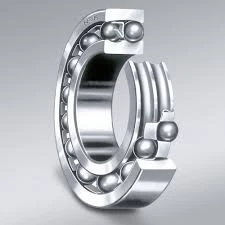
10 月 . 06, 2024 20:29 Back to list
axial radial cylindrical roller bearings
Axial and Radial Cylindrical Roller Bearings An Overview
Cylindrical roller bearings are critical components in various mechanical systems, providing the necessary support for rotating elements. Within this category, axial and radial cylindrical roller bearings play significant roles, each suited to specific applications and load conditions.
What Are Cylindrical Roller Bearings?
Cylindrical roller bearings consist of cylindrical rollers that are arranged parallel to each other. These bearings are designed to accommodate both radial and axial loads, making them versatile for a range of industrial applications. The primary advantage of cylindrical roller bearings is their ability to support high loads while maintaining low friction during operation. This efficiency is crucial for machinery that relies on precise movement to function optimally.
Axial Cylindrical Roller Bearings
Axial cylindrical roller bearings are specifically designed to accommodate axial (thrust) loads—forces acting parallel to the axis of the shaft. These bearings typically have a single or multiple rows of cylindrical rollers and a cage that retains the rollers in place. The arrangement allows them to handle significant axial loads in one direction, and in some cases, both directions.
These types of bearings are commonly used in applications where there is a need to support axial loads, such as in rotary tables, gearboxes, and some types of pumps. In scenarios where axial loads are abundant, such as in marine propulsion systems and heavy machinery, axial cylindrical roller bearings ensure stability and reliability, preventing distortion and unwanted movements.
Radial Cylindrical Roller Bearings
In contrast, radial cylindrical roller bearings are engineered primarily to support radial loads—forces acting perpendicular to the shaft's axis. These bearings can accommodate both radial and a limited amount of axial load, providing more flexibility in applications where mixed loading occurs. A hallmark of radial cylindrical roller bearings is their ability to sustain high radial loads due to the increased contact area between the rollers and the raceway.
axial radial cylindrical roller bearings

These bearings are widely used in various machinery applications, including electric motors, automotive engines, and industrial equipment. They are particularly favored in applications requiring high-speed rotations and substantial radial support. Their design minimizes friction and wear, which contributes to prolonged service life and efficiency in operations.
Design Considerations
When choosing between axial and radial cylindrical roller bearings, several factors must be evaluated
1. Load Requirements Understanding the load—both radial and axial—is crucial in selecting the right type of bearing. For applications with primarily axial loads, axial cylindrical roller bearings are more suitable. Conversely, for significant radial loads, radial cylindrical roller bearings are preferred.
2. Speed The rotation speed of the application can influence the bearing choice. Radial cylindrical roller bearings tend to perform better at high speeds due to their design, which facilitates reduced friction.
3. Durability and Maintenance The longevity of bearings is influenced by material selection and design. Bearings should be chosen not just for their load capacity, but also for their resistance to wear and tear over time.
4. Operating Conditions Environmental factors such as temperature, humidity, and the presence of contaminants can affect bearing performance. Selecting bearings that can withstand specific operating conditions is vital for ensuring reliability.
Conclusion
In conclusion, axial and radial cylindrical roller bearings are indispensable in modern machinery. The choice between these two types hinges on the specific application requirements, including load types, speed, and operating conditions. By selecting the appropriate bearing, manufacturers and engineers can enhance the efficiency and longevity of their equipment. Understanding the intricacies of these bearings ultimately leads to better design, enhanced performance, and improved overall productivity in various industrial sectors.
Latest news
-
Unlocking Efficiency with Spherical Roller Bearings
NewsOct.29,2024
-
The Ultimate Guide to Thrust Ball Bearings
NewsOct.29,2024
-
The Power of Thrust Roller Bearings: Engineered for Excellence
NewsOct.29,2024
-
The Power of Deep Groove Ball Bearings for Your Application Needs!
NewsOct.29,2024
-
The Power and Performance of Cylindrical Roller Bearings
NewsOct.29,2024
-
High-Quality Ball Bearing Manufacturing Machines
NewsOct.29,2024
